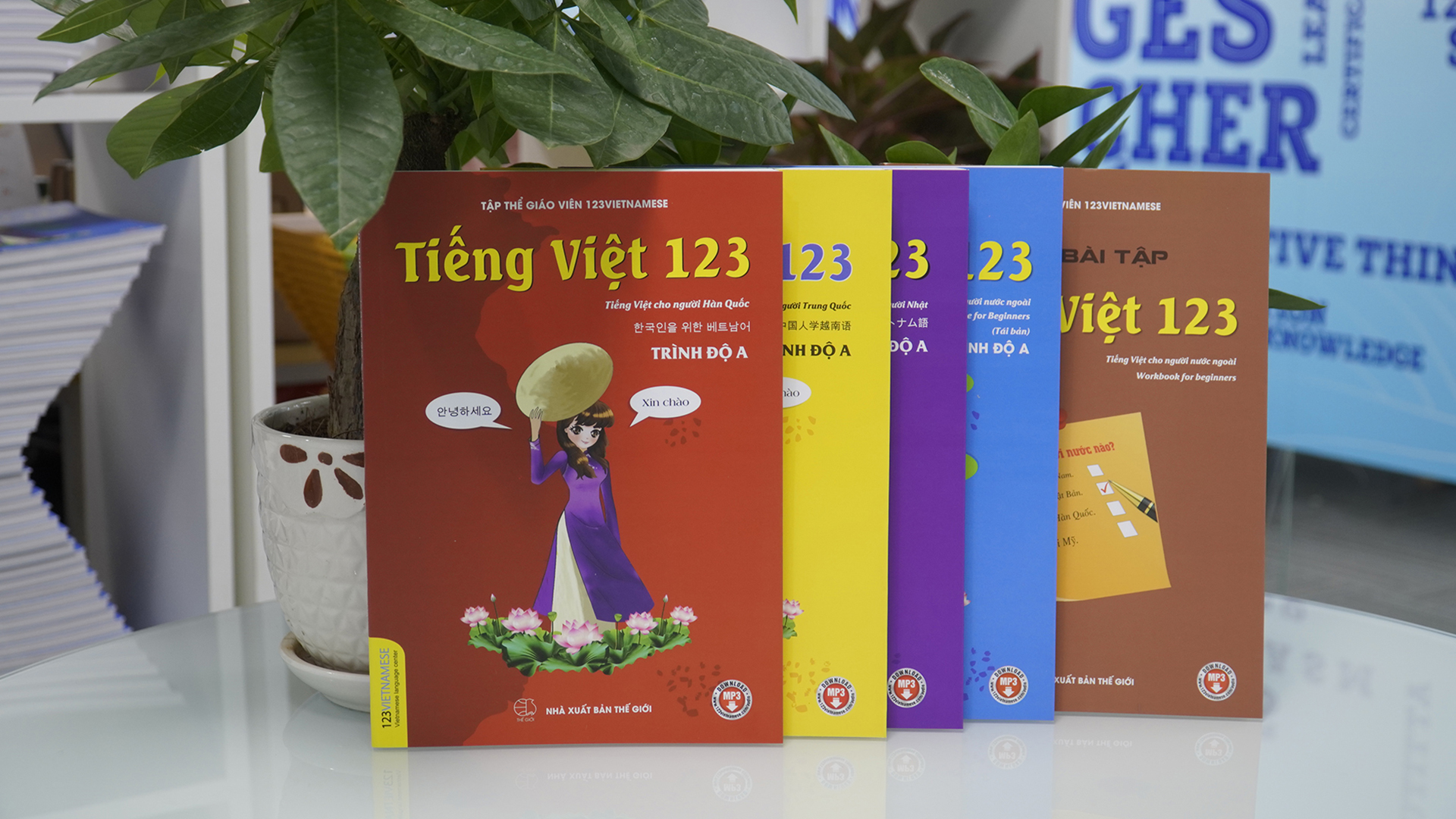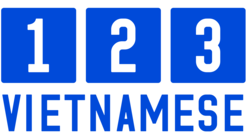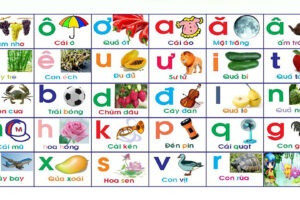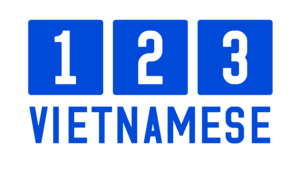
The application of hyper-multimedia to the teaching of Vietnamese for foreigners: Vietnamese interactive book
1. INTRODUCTION
I would like to start my presentation with two notions:
1.1. In April, 2007, The International Conference on Teaching Vietnamese for foreigners “I don’t Understand” was organized by Maryland university and The US State department in Washington DC. The main issue is that “Why after few months to few years, foreigners learn Vietnamese, but they couldn’t understand what are Vietnamese speaking”.
1.2. In the last few years, on Tuoi Tre newspapers, there were several articles on the teaching of English as a Foreign Language at both secondary high schools and universities in Vietnam. These articles which were written by teachers, parents, researchers and academics, have indicated that students (high schools and universities) who learnt English for several years but they could not use English for communications. These situations can be explained by some researchers, language teaching experts and academics on two reasons:
a.) The language teaching methodology hasn’t been up-to-date. In most language classes, the teacher-centered is popular.
b.) The teaching materials are boring hard copies and not suitable with the daily life situations.
What could be done to improve the situations of teaching Vietnamese for Foreigners?
There should have several strategies and one of them is to apply the latest Information and Communication Technology (ICT) for Vietnamese teaching and learning.
During the past two decades, the applications of Information and Communication Technology have received increasing attention among language teachers and educators.
Multimedia clearly offers many exciting opportunities for language teaching and learning. The possibility of combining text, images, sound and video in a variety of activities was a major step forward in Computer Assisted Language Learning (CALL).
CALL is a term that came into favor in early 1980s, replacing CALI (Computer Assisted Language Instruction). Throughout the 1980s CALL widened its scope, embracing thecommunicative approach and a range of new technology, especially multimedia and communications technologies.
CALL now includes highly interactive and communicative support for listening, speaking, eading and writing, including extensive use of multimedia CD-ROMs and the internet. Nowadays, foreign language curricula focus on productive skills with special emphasis on communicative competence. Students’ ability to engage in meaningful conversational interaction in language is considered an important, if not the most important, the goal of second/foreign language education.
Obviously, as a language teacher I have applied these Information and Communication Technologies to develop some packages for the teaching and learning of Vietnamese for foreigners for many years.
My presentation is on the projects of hyper-multimedia applications based on the communicative language teaching approach for the teaching and learning of Vietnamese for foreigners.
2. BACKGROUND
The teaching and learning of Vietnamese for foreigners has flourished in the last decades. They had been introduced over hundred years since French education curriculum was implemented in Vietnam under French domination. The pioneer of this field is the scholar, educator Truong Vinh Ky.
Since 1986, Vietnam opened the door to the world and reformed its economic system from central oriented system to the market economy, there were many foreign companies and firms moving their investments to Vietnam. The demand of teaching and learning Vietnamese language and culture was great. Any country that has diplomat and trade relationships with Vietnam, has a Vietnamese studies program. Particularly, Vietnam is now a member of the World Trade Organization (WTO) and has been emerging into globalized communities.
The study of Vietnamese contributes to the overall education of students, most particularly in the area of communication, but also in the areas of cross-cultural understanding, cognitive development, literacy and general knowledge.
It provides access to the Vietnamese culture and promotes understanding of different attitudes and values within the world wide community.
The study of Vietnamese develops the student’s ability to understand and use Vietnamese which is spoken by over 84 millions people in Vietnam and it is also the home language of over 3 millions people living in other countries such as France, the United States, Canada, Australia. . .
The ability to communicate in Vietnamese, in conjunction with other skills, may broaden students’ vocational options in areas such as trade, education, literature, diplomat, interpreting and translating. . .
Looking back the history of teaching Vietnamese for foreigners, there have been a lot of dilemma on teachers, teaching/learning materials and methods, but most teachers who were invited to teach Vietnamese at foreign universities have done their best to train students to use Vietnamese fluently. There are still something to be done to up-to-date the teaching methods and learning materials. One of those is to apply Information and Communication Technologies (ICT) for the teaching and learning of Vietnamese language.
3. LANGUAGE TEACHING METHODS AND MULTIMEDIA and LEARNING VIETNAMESE ONLINE
3.1. Language teaching methods:
“It is by now well documented that language teaching field has moved through various pedagogical approaches since the beginning of this century” (Richards and Rogers, 1986).
The major changes in theoretical perspectives have been from the traditional grammar-translation approach, which emphasized the explicit and inductive written study of grammar, to the behavior-oriented audio-lingual approach which focused on habit formation, to the current communicative approach which is essentially concerned with real use of the language in the learning process and the development of communicative competence as a major learning outcome.
“ The communicative approach has been reinforced by studies in second language acquisition which have suggested that optimal language acquisition occurs when the learner is engaged in authentic interactive communication” (Nunan, 1991).
3.2. Multimedia:
The term Multimedia was originally used to describe packages of learning materials that consisted of a book, a couple of audiocassettes and videocassettes. Nowadays Multimedia refers to computer-based materials designed to be used on a computer that can display and print text and high quality graphics, play pre-recorded audio and video materials, and create new audio and video recordings.
Because of its capability of integrating the four basic skills of listening, speaking, reading and writing, multimedia is of considerable value and interest to the language teaching and learning.
Multimedia applications motivate highly both for students and for teachers. They make the learning process more actively and enjoyable.
Nowadays, it can be assumed that the majority of Multimedia applications embrace the functions that Waschauer describes to hyper-multimedia:
“First of all, a more authentic learning environment is created, since listening is combined with seeing, just like in the real world.
Secondly, skills are integrated, since the variety of media make it natural to combine reading, writing, speaking and listening in a single activity.
Third, students have great control over their learning, since they can not only go at their own pace but even on their own particular aspects and skipping other aspects altogether.
Finally, a major advantage of hyper-multimedia is that it facilitates a principle focus on the content without sacrificing a secondary focus on language form and learning strategies. For example, while the main lesson is in the foreground, students can have access to a variety of background links which will allow them rapid access to grammatical explanations or exercises, vocabulary glosses, pronunciation information or questions or prompts which encourage them to adopt an appropriate learning strategy” (Warschauer, 1996).
Warschauer claims that we are now well into the integrative phase. Certainly, the range of different types of CALL software currently available is impressed.
One can take issue with Warschauer, however, the term behavior certainly describes early CALL (late 70s, early 80s) but the Communicative approach, spurred on by the Council of Europe’s work on the Common European Framework (CEF) and its emphasis on functions, notions and communicative competence in the 1970s, predates the advent of the microcomputer in schools and universities.
3.3. Vietnamese online:
The Web is a remarkable invention by Tim Berners-Lee and has transformed the nature of CALL.
In 2000, Broadband became more widely available, opening up new possibilities for delivering audio and video materials via Web. Blogs and face-book appear and then E-learning becomes popular in education delivery. “If someone is learning in a way that uses information and communications technologies, they are using e-learning” (Mark Pegrum’s wiki on Myths of E-learning: http://e-learning.wikispaces.com).
In the last five years, some Vietnamese language online courses have been developed recently:
- Viện phát triển ngôn ngữ : www.vienngonngu.vn
- Arizona State University: www.learningvietnameseonline.com
- Foreign Service Institute, US State Department: www.langocity.com
- Australian Educators: www.ausieeducator.org.au
- The Learn4Good Director: www.learn4good.com
- Wikipedia: www.101languages.net/vietnamese
- The National project (OVC), MoET Vietnam: www.vietstudy.org
- EDV: www.everydayviet.com
4. VIETNAMESE INTERACTIVE BOOK for Foreigners
The Vietnamese Interactive book projects see a learner-centered approach, activities-based approach and a focus on the learning process as essential features of language learning.
These concepts and approaches motivate the projects which apply the hyper-multimedia technology to create “The Vietnamese Interactive book for Foreigners”.
Since the early 1990s, there were three Vietnamese programs that have been developed by Victoria University:
- Vietnamese with Barcodes Interactive Book: This book is a technology which combines normal printed book with computers through the use of barcodes. When a student swipes a barcode the computer responds by pronouncing words, phrases and conversations. Students also use a microphone to record their oral performance. This project was funded by Federal Department of Education and Training, Australia.
- Vietnamese with multimedia touch-screen: Instead of using a light pen, students use their finger to touch the screen and activate a function such as practicing pronunciations, recording and role playing conversations. While the students are listening to the sound they can also see the written words appear on the screen monitor.
- Vietnamese with CD-I: the other package is to help students using the CD-I system (Compact Disc Interactive) to learn Vietnamese. They can see pictures, visualizing the conversation, and practice Vietnamese sentence by sentence or by whole conversations.
These products are still available but they are out of date.
The project has two products:
4.1. Vietnamese Talking Book for Foreigners:
This package consists of a set of text books (4 books) and an intelligent talking pen. It has been developed by The City-Smart Education and Technology (www.ezy-talk.com.vn) and is now available at book-shops (see demonstration). It’s convenient for learners who can carry them. They can listen and record conversations, vocabulary, reading texts and compare with their voice. The package is also available online.
4.2. Vietnamese Interactive Book for Foreigners:
The new project “Vietnamese Interactive Book for Foreigners” applies the latest hyper-multimedia technology for teaching and learning Vietnamese for foreigners who want to learn Vietnamese. This project is self-funded supported by Lac Vi t Computing Co-peration Pty. Ltd. This Vietnamese Interactive Book will be available online when it will be completed (see demonstration of a sample).
The Interactive Book allows learners to have an interactive conversation with the computer.
The focus is on improving communication, grammar skills, listening comprehension, while enhancing vocabulary and written expression.
The Vietnamese Interactive/talking Book programs present a stimulus to which the learners respond. The stimulus is presented in any combination of text, still images, sound and motion video. The learner responds by typing at the keyboard, printing and clicking with the mouse, or speaking into a microphone. The computer offers feedback, indicating whether the learner’s response is right or wrong.
The Interactive Book provides a course work for beginners at secondary schools, tertiary level and business people as well.
This is a Vietnamese course for foreigners who begin to study Vietnamese and up to the advanced level. This course is for three year study as a major or sub-major in any degree in which the study of a language is part of the course structure.
The aims of the course are to develop learners’ communicative competence, to equip them with strategies of language learning and to raise their socio-cultural awareness.
The learners will be able to communicate in Vietnamese in a variety of situations. They will be able to understand and express themselves in Vietnamese in everyday life. The emphasis will be on communication and on what is immediately useful and usable. Therefore, the communicative language teaching approach has been applied to meet the learners’ needs and is centered on those needs rather than on structures.
The course consists of the 4 text books, DVD disc and workbook. The whole text books are
illustrated in moving pictures and installed in the computer.
5. CONCLUSION
Communication is at the heart of language teaching and learning. The Vietnamese Interactive Book provides opportunities to students to interact in real life situations. The package also provides learners with various levels of interactivity. One of the most important aspects of interactivity is that of feedback. Learners can also role play with native speakers, to record their own input, and compare it with native speakers.
The Information and communication technologies (ICT) including hyper-multimedia are moving to the future that we are not sure what will be happening but we believe that any change will have an impact on the teaching and learning of Vietnamese for foreigners.
References
1. Bax S. (2003): CALL-past, present and future, System 31:13-28
2. Davies G. (1997) “Lessons from the past, lesions for the future: 20 years of CALL, www.camsoftpartners.co.uk
3. Davies G. (2007): “Computer Assisted Language Learning: Where are we now and where are we going? ” www.camsoftpartners.co.uk
4. De Szendeffy J. (2005): A practical guide to using computers in language teaching, www.press.umich.edu
5. EuroCALL: www.eurocall-languages.org
6. EUROpean Commission: www.ictlt.org
7. Fitzpatrick, A. & Davies, G. (2003): The impact of Information & Communications Technologies on the Teaching of Foreign Languages and on the Role of Teachers of Foreign Languages, www.camsoftpartners.co.uk
8. Hewers, S. & Davies, G.(2000): Integrating ICT into Language Teaching, Thames Valley University
9. IC4LT Recourse centre on CALL: www.ict4lt.org
10. Phan Văn Giư ng,(2007): The applications of ICT to the Teaching of Vietnamese as a Foreign Language, International conference on CALL, VN
11. Warschauer M. (1996) Computer-assisted Language Learning: An Introduction, www.gse.uci.edu
12. WorldCALL: www.worldcall.org
Author: Phan Văn Giưỡng
(GS.TS Trường ĐH Victoria, Úc)









